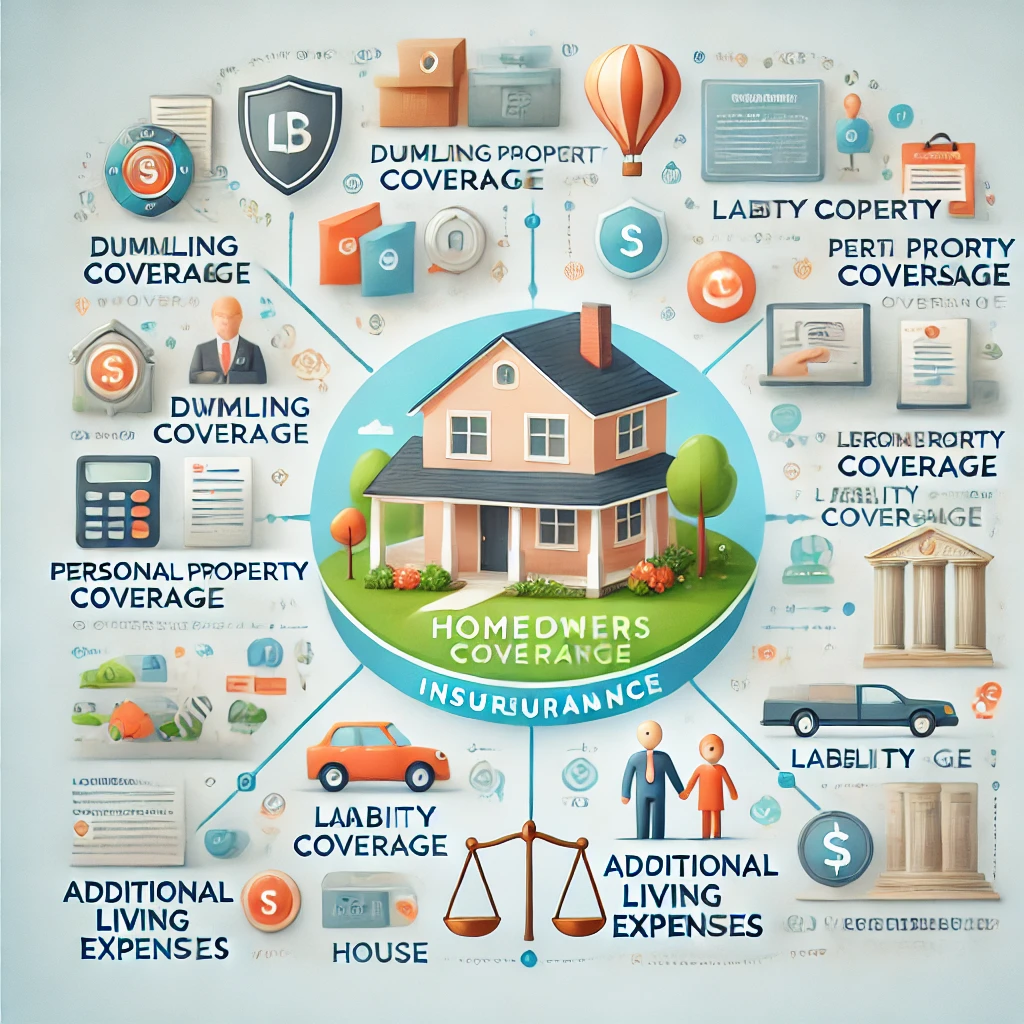A Guide to Homeowners Insurance: Protecting Your Home and Assets

Homeowners insurance is a type of property insurance that provides coverage for a private residence. It helps protect against losses and damages to your home and belongings due to events like fire, theft, and certain natural disasters. Here’s an in-depth look at homeowners insurance, its components, and how to choose the right policy.
1. What Is Homeowners Insurance?
Homeowners insurance, also known as home insurance, provides financial protection for your home and personal property against various risks. It typically covers the structure of the home, personal belongings, and liability for injuries or damage to others that occur on the property.
2. Key Components of Homeowners Insurance
- Dwelling Coverage: Protects the physical structure of the home, including walls, roof, and built-in appliances, against perils like fire, wind, or hail.
- Personal Property Coverage: Covers personal belongings inside the home, such as furniture, electronics, and clothing, against theft, fire, and other covered events.
- Liability Coverage: Provides protection if someone is injured on your property or if you accidentally cause damage to someone else’s property. It covers legal fees and medical expenses.
- Additional Living Expenses (ALE): Pays for temporary housing and other living expenses if your home is uninhabitable due to a covered loss.
- Other Structures Coverage: Covers detached structures on your property, such as garages, sheds, or fences, against covered perils.
3. Types of Homeowners Insurance Policies
- HO-1 (Basic Form): Provides limited coverage against a specific list of perils, such as fire and theft. It’s the most basic and least comprehensive policy type.
- HO-2 (Broad Form): Offers broader coverage than HO-1, covering more perils, including falling objects and damage from electrical appliances.
- HO-3 (Special Form): The most common policy, it covers the home against all perils except those explicitly excluded (e.g., flooding or earthquakes). Personal property is covered against named perils.
- HO-4 (Renters Insurance): Designed for tenants, it covers personal property and liability but not the structure of the building.
- HO-5 (Comprehensive Form): Offers the most extensive coverage for both dwelling and personal property, including all perils unless excluded.
- HO-6 (Condo Insurance): Covers personal property and interior structure elements for condominium owners, typically within the condo unit itself.
- HO-7 (Mobile Home Insurance): Similar to HO-3 but designed for mobile or manufactured homes.
- HO-8 (Older Home Form): Provides coverage for older homes with high replacement costs, offering repairs or cash value instead of replacement costs.
4. Common Exclusions in Homeowners Insurance
- Flooding: Typically not covered; separate flood insurance is required.
- Earthquakes: Excluded in standard policies but can be added as an endorsement.
- Wear and Tear: Damage from regular maintenance issues or neglect is not covered.
- Certain Dog Breeds: Liability coverage may exclude injuries caused by certain breeds considered dangerous.
5. Benefits of Homeowners Insurance
- Financial Protection: Covers repair or replacement costs for your home and belongings in the event of a covered loss.
- Liability Coverage: Protects against legal and medical expenses if someone is injured on your property.
- Lender Requirement: Most mortgage lenders require homeowners insurance to protect their investment.
6. Tips for Choosing the Right Homeowners Insurance
- Assess Coverage Needs: Evaluate the value of your home and personal belongings to determine adequate coverage limits.
- Compare Policies: Shop around and compare different insurers and policies to find the best coverage and rates.
- Understand Policy Exclusions: Be aware of what is not covered by your policy and consider additional coverage for those risks (e.g., flood insurance).
- Bundle Policies: Consider bundling home and auto insurance for discounts and convenience.
- Review Annually: Regularly review your policy and update coverage as needed, especially after home improvements or significant life changes.
7. How to File a Homeowners Insurance Claim
- Document the Damage: Take photos or videos of the damage before making any repairs.
- Notify Your Insurer: Contact your insurance company to report the loss and begin the claims process.
- Meet with an Adjuster: The insurance company may send an adjuster to assess the damage and determine the payout.
- Receive Payment: Once the claim is approved, you’ll receive payment to cover the repairs or replacements, minus any deductibles.
8. Conclusion
Homeowners insurance is essential for protecting your home, personal property, and financial well-being. By understanding the different types of policies and coverage options, you can choose a plan that best suits your needs and provides peace of mind against life’s unexpected events.